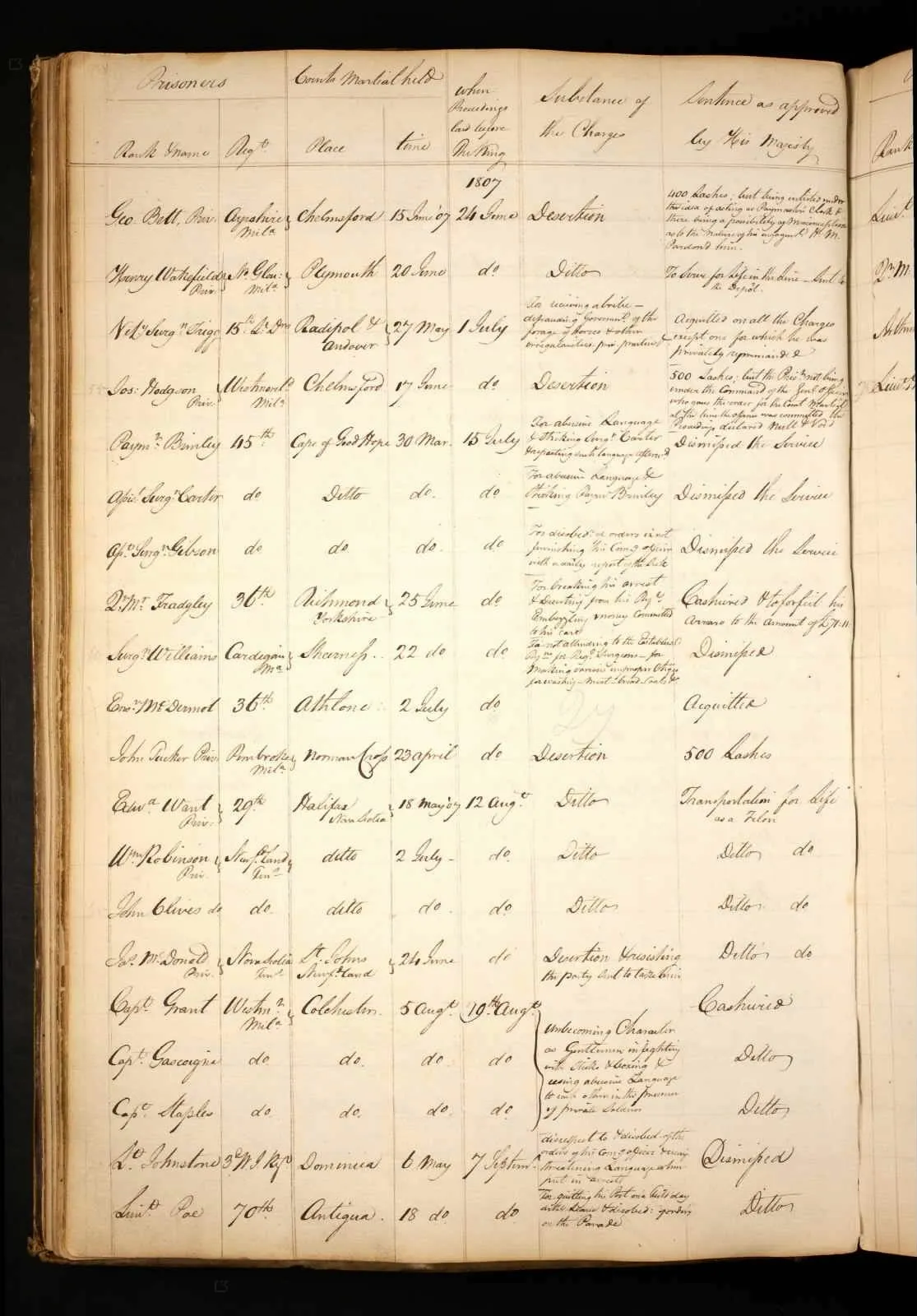What are British Army court martial records?
Courts martial are military courts trying members of the armed forces for offences against military law and, sometimes, breaches of civil law. British Army court martial records date back over the past 300 years. If your ancestor served in the armed forces, you could find them in these records, although only a minority of service personnel would have faced a court martial in their careers.
You may also like:
British Army court martial records: Where to find them
A free downloadable Excel database of transcribed British Army court martial records, for offences committed abroad between 1851 and 1900, has been put online by Amy Milne-Smith. It gives details of name, rank, regiment, place, charge and sentence.
An index to transcriptions of court martial records, both Army and Royal Navy and home and abroad, is available on Ancestry as ‘UK, Naval and Military Courts Martial Registers, 1806–1930’. You will have to join the firm’s military-focused site Fold3 to see an image of the original record; an annual subscription costs $79.95. Alternatively, you can visit The National Archives (TNA) in Kew.

The vast bulk of British Army court martial records were destroyed in a fire in a War Office warehouse in London during the Second World War. The War Office document WO32/21769 entitled ‘Records Destroyed at Arnside Street’, which can currently be downloaded for free via TNA’s catalogue Discovery, simply refers to “JAG [Judge Advocate General] Court Martial proceedings” and “SUNDRY: Several volumes of Court Martial proceedings”. For these, the courts martial registers may be the only record.
Surviving British Army court martial records at TNA from the First World War are between WO71/387 and WO71/687, and indexed by name, initials and offence; they have not been digitised. They include records of executed men and their subsequent pardons. Some details of officers’ court martial may appear in what survives of their records in WO339 (regular officers) and WO374 (Territorial officers), but these are very hit-and-miss; again, a visit to Kew is necessary.
WO71 also contains British Army court martial records from 1940 through to 1992, although some later records remain closed for data-protection reasons. You may be able to submit a Freedom of Information (FOI) request to open these.
TNA’s research guide for British Army court martial records includes a section “What can I view online?” summarising the surviving records for the Army, although the title is misleading because most of the records mentioned haven’t been digitised.
Old newspapers often reported on court martial proceedings, so you may find more details in the British Newspaper Archive or on Findmypast if you have a Pro subscription.
Court martial records for the Royal Navy and Air Force: Where to find them
Ancestry has also digitised and indexed the Royal Navy courts martial registers through Fold3. The Navy didn’t suffer the catastrophic loss of records during the Second World War that the Army did, though it’s clear that from the mid-19th century to the early 20th century only those considered legally important were kept. Records of proceedings are chronological. Records for Royal Marines as well as sailors from 1680–1839 are between ADM1/5235 and ADM1/5494 in TNA, with early ones indexed by name. If you know the year from a courts martial register, search ADM1 under the year to find relevant reports between 1845 and 1910. Later courts martial reports are in ADM178 and ADM156.
The Royal Air Force inherited the Army’s courts martial system when it was formed in 1918. AIR21, arranged chronologically, contains registers with name and rank of each prisoner, place of trial, nature of the charge and the sentence, plus the date and place of the court.
However, files in TNA’s series AIR18 contain records of courts martial of RAF personnel from 1941–1994. Some documents are retained because the information is particularly sensitive. FOI requests can be submitted for many of these. Files include: summaries of evidence; witness statements; descriptions of exhibits; service-record summaries; statements to the police; trial transcripts; names of witnesses; members of the court martial; and lawyers.
Phil Tomaselli has written extensively on military and family history. He is the author of Tracing Your Second World War Ancestors and Tracing Your Air Force Ancestors.
